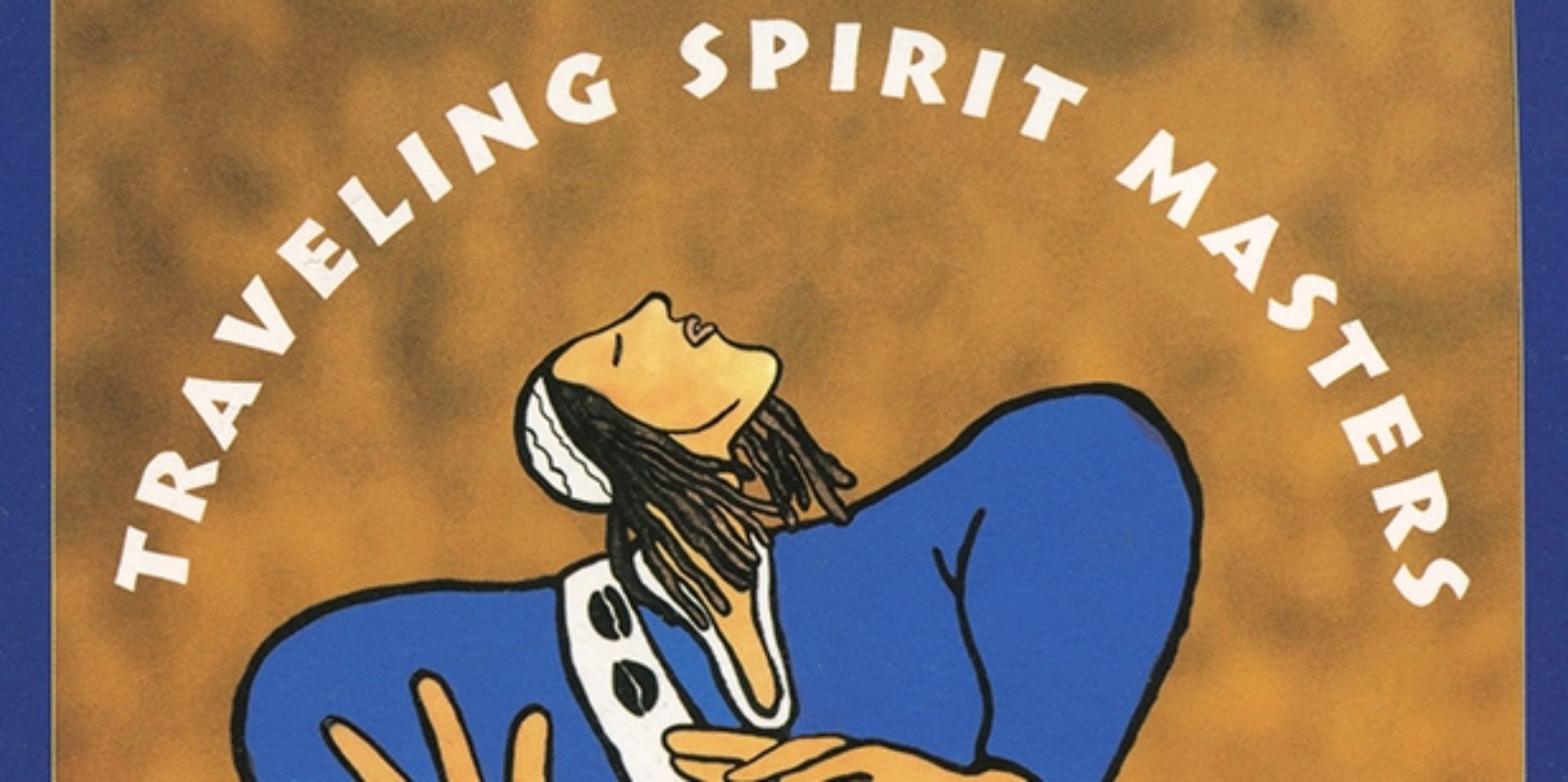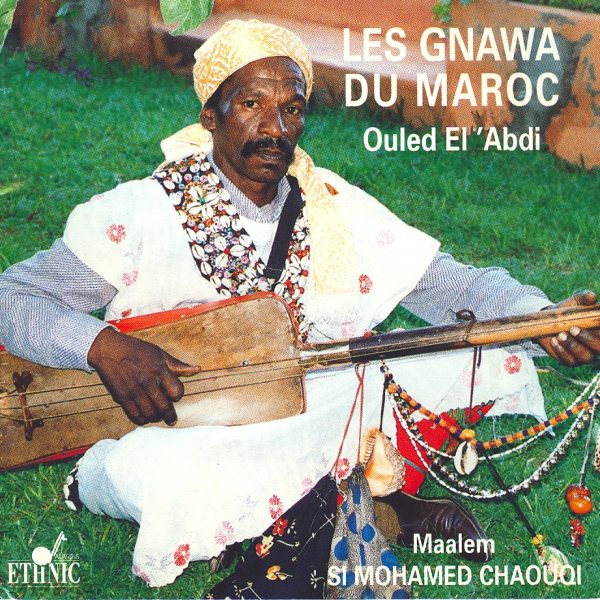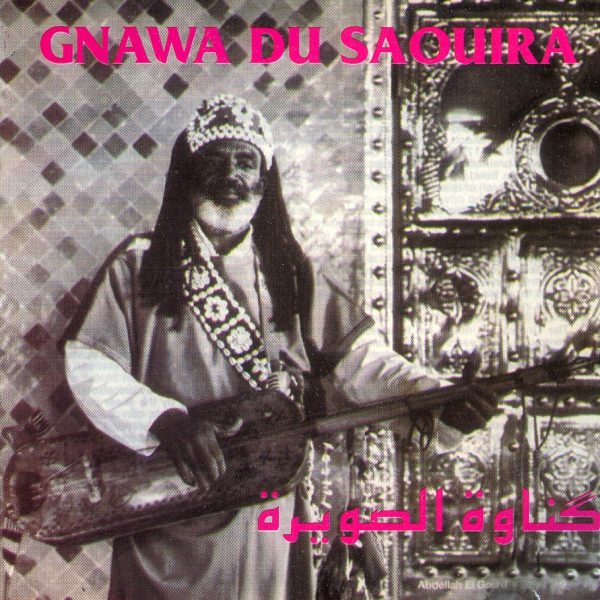Deborah Kapchan is a professor of Performance Studies at New York University, and the principle voice for Afropop Worldwide’s Hip Deep program, Traveling Spirit Masters: The Gnawa of Morocco. Professor Kapchan has been doing research in Morocco since 1990. In 2007, she published a book on her work with the Gnawa, Traveling Spirit Masters: Moroccan Gnawa, Trance and Music in the Global Marketplace (Wesleyan University Press). Banning Eyre interviewed her in her office in New York in 2009. Here’s their conversation.
Banning Eyre: Tell us how you initially became involved with Gnawa music.
Deborah Kapchan: I didn't get involved in Gnawa music right away. I went to Morocco in 1982. I was a Peace Corps volunteer. I lived there a couple of years, and the third year, I was a research assistant. I learned Arabic, I learned as much as I could about Moroccan culture and music, and then I went back to the United States. My early graduate work was on other kinds of expressive culture in Morocco—oratory, women's genres, leita, which is a genre of music that is often associated with resistance, women's music that is rather rebellious. So when I went back to do my second research in 19901994, I took advantage of my interest in West African music to actually go back and look at that music, but this time in Morocco, and with the Gnawa. It seemed the obvious step for me at that time in my life.
I’d like you to read aloud some of the Gnawa song lyrics that speak about slavery: (pp. 180-81) Then talk about slavery as a historical reality for the Gnawa, and also as a metaphor in Gnawa possession ritual.
“Tied in sacks they brought us.
In the camel bags, and they sold us in the wool market.
May God pardon them.
They took us from our country.
They parted us from our parents.
They brought us a last to the wool suq and they sold us,
children, far from our country.”
The origins of the Gnawa are not completely homogeneous. The Gnawa came from different parts of Africa. Many, the most, came during the 15th and 16th centuries under the Saadians who went to Timbuktu and basically brought captives from the Songhai Empire to Morocco to work as soldiers. But the West African sub-Saharan population in North Africa has been in Morocco for a long time. There are herders in the Sahara, Berberized or Berber-speaking people, that have been documented since the 3rd century. But the largest influx was in the 15th and 16th centuries, as slaves. So for the Gnawa, slavery is something they employ in their songs as we hear in these lyrics.
Now as a metaphor for possession, first off, the spirits, the possessing spirits are called mluk, the owners. So one is inhabited by spirits, but also possessed, owned, by spirits. The trauma of slavery, on the other hand, is something that can be worked out in ceremonies such as possession ceremonies. People are going into trance, and there are a lot of mortification rights. For example people slash themselves with knives. People burn themselves with the flames of candles, but while in a very different state. That is, they are performed as if they were possessed as slaves, but they are in a transcendent state where they are not vulnerable. In a sense, they can go from being the victim of a spirit to what they call "working the spirits," a kind of mastering of the state of possession. And there's a healing involved in the whole ceremony.
The ceremonies are healing ceremonies. That's what they are. Not everyone who attends a Gnawa ceremony is possessed by a spirit. The large majority are, but there are some who go for the catharsis of trance itself. Trance. There are many forms of trance. Gilbert Rouget in his book Music and Trance talks about these different kinds of trance. Certainly, in the Gnawa ceremony this is music-induced trance. But it is also possession trance. There are also ecstatic trances that may not involve possession by a spirit. But the ceremonies are for healing by the spirits, and the spirits pass through music. Onem’allam (Gnawa master) told me that the spirits pass through the hajhuj, the main instrument that the master plays to bring the spirits and to heal those who are afflicted through spirit possession. It's extremely cathartic in every case.
We could all use more of that, eh?
Absolutely. In large part, I think this accounts for the global fascination with trance forms. We find trance in every corner of the world. It's ubiquitous. But there's also a kind of new way of trance, if you want. There is techno trance. There are people who buy trance music in the world music section of CD stores, and that fascination with trance has a lot to do with the fact that we have a hunger as human beings to go to that place where trance takes us.
There isn’t much of that readily available in American culture. I think we have a trance deficit in our society.
Exactly. And what's great about Morocco -- something that struck me when I first started doing this research -- is that you have old women up on the floor. They've got their canes and they can hardly stand up, but they are trancing. It's not age limited. Sometimes the trance phenomenon, for example here, is very age limited. It's for youth. Techno trance. The clubs are for young people. But in Morocco—and this has always been the case—these ceremonies have no age limit. You find young children there who are basically sitting and watching the whole spectacle, and you have old, old people who have been doing it all their lives.
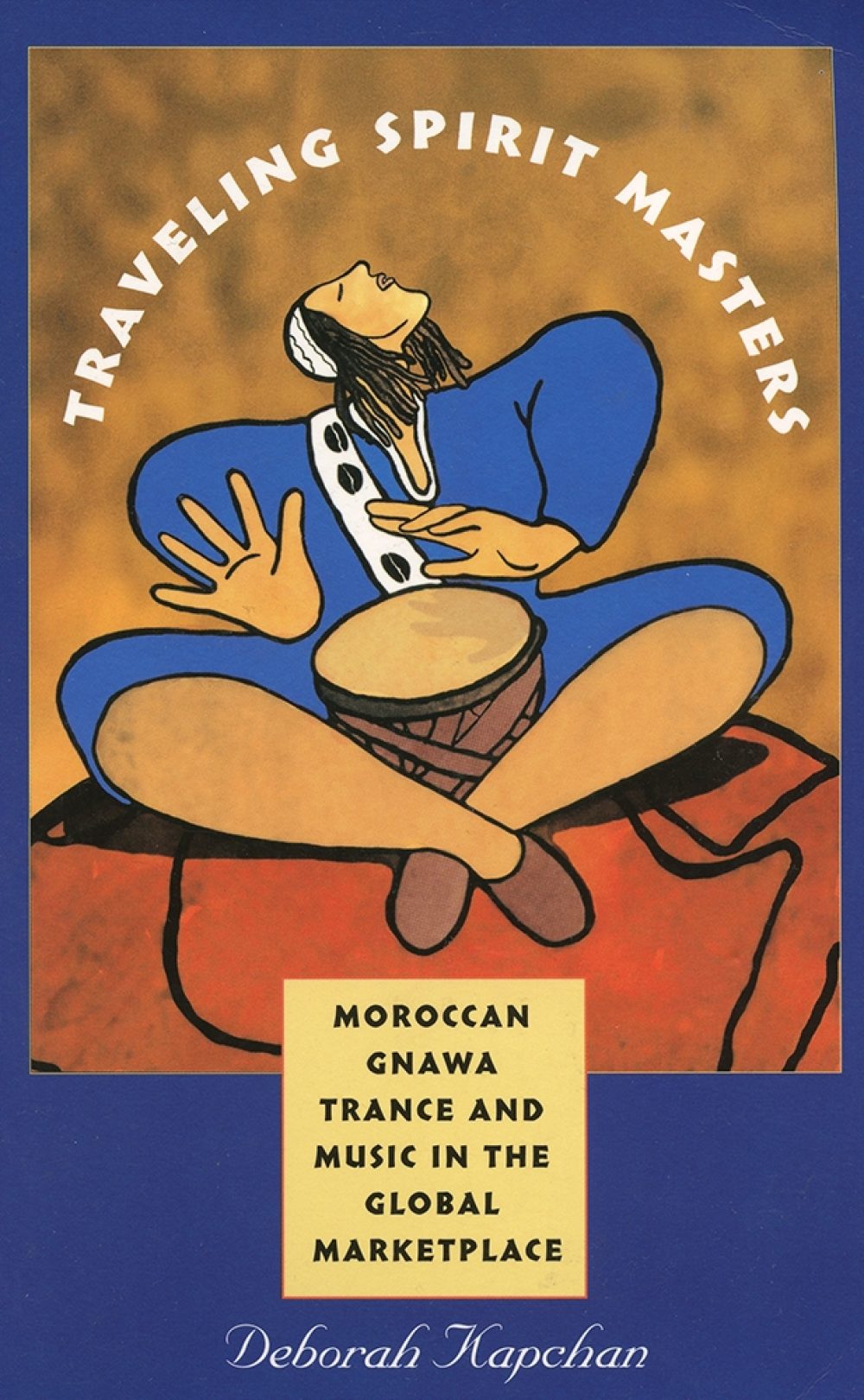
In your book, you quote texts about healing through forgiveness. Islam seems to become a vehicle for transcending, even “forgiving” the crime of slavery. Is that reading too much into it?
No, I think that’s right, and this is not something unique to the Gnawa. Forgiveness, and asking for forgiveness in the context of a healing ceremony is not particular to the Gnawa and Morocco. If you frequent the ‘Aissawa, the Boutshishiyya, or any of the Sufi orders in Morocco, you find over and over again songs and prayers that ask for forgiveness and healing. "Heal us, God. Heal us, God." [allah dawina, dawina] This comes up all the time in Sufi music. It is important to say that the Gnawa are not Sufis in the sense that they don't have a shaykh, and they don't have a hagiography, writings left by that shaykh. But the practice of Islam in Morocco is very Sufi-influenced, which means that they are used to devotion through chanting, through movement, through ecstatic forms of worship. This is not foreign to Moroccan society in general. It’s not just the Gnawa. Invoking the Prophet Muhammed and asking for forgiveness and healing is common to all or most Sufi groups in Morocco, including the Gnawa, so while the Gnawa are not Sufis per se, they are Sufi influenced.
This is actually a point of disagreement. It is very important here to mention some of the French scholarship I admire, the work of Viviana Pâques, who was a student of Marcel Griaule and of Bertrand Hell, an extremely prolific and very profound scholar of the Gnawa who now works in Madagascar and elsewhere. The French scholarship views the Gnawa more as Sufis because they grew up in the Sufi-imbued milieu of Morocco. However, if you speak to people who are serious Sufi devotees in Morocco, they might not agree with that. For them, being Sufi is having a shaykh and having a written tradition that you follow. Perhaps we’re splitting hairs here, but in any case, asking for forgiveness and healing is common to all these groups.
You point out in your book, intriguingly, that Morocco, like America, was a destination for slaves. What do you make of that commonality?
Well, the Gnawa are part of the African diaspora. We see that, for example, Randy Weston goes back to Africa in 1967 to look for his origins, and he finds the Gnawa, who were also slaves brought from elsewhere, but who never left Morocco. He finds commonality with the Gnawa, through this worldwide African diaspora. It connects both of them to a more global movement, a global diaspora, and a global identity. Essaouira was a slave port. That is a major site for Gnawa activity. There is a sanctuary, or zawiya, for the Gnawa there. Today more than 400,000 people every year go to the Essaouira Gnawa World Music Festival, in this tiny little town where Gnawa are brought from different parts of Morocco to play with artists from all over the world.
Although the visiting artists are sometimes well known, and greatly appreciated, it's really when the Gnawa come on stage clacking the qraqab (iron castanets) that the applauds and goes wild. There is something about the addition of the Gnawa aesthetic to all the other music, whether it's jazz or rai, that sends everyone into a kind of rapture.
Fascinating. And to have it in that particular setting, so laden with the history of slavery is quite amazing. Do you think most of the people who come are aware of that connection?
I think most of them are not, but there's a lot of discourse now about such things. We should say, though, that Essaouira is not only a destination for those who appreciate the Gnawa. It was also a very important Jewish city before 1948, and up to 1956 when a lot of Jews left.
I understand that there are a lot of Gnawa today who do not share this ancestry of slavery. Who are they?
Traditionally, the Gnawa passed on their knowledge as an oral tradition, in the body—through dance or trance, through music and ritual. It was mostly passed on from father to son. I should say that the musicians are men in the Gnawa tradition, but the women are extremely important. The main overseer of the ceremony is called the mqaddema. She's a woman, and a large majority of the people who bring the Gnawa to their homes are women, so women are very important to this equation. Now, as is the case in many expressive traditions in Morocco at the moment, you don't make a lot of money as a ritual musician, and in fact, in the early days, you were not a professional Gnawi. That was a sideline. You had a day job. For example, Abdellah El Gourd was an engineer for Voice of America in Tangier. He was a m‘allem in the evening.
The ceremony is called a lila, which means night, because it starts at night, sometimes not until ten or even midnight, and goes till early in the morning, sometimes 7, 8 am. It was not professionalized until relatively recently. The Gnawa used to work for meals and a few dirhams that would be exchanged over the course of the ceremony. Now, many young people want to learn Gnawa music so that they can become "Gnawa musicians," travel to Europe, put it on the identity card, get a passport, and be a professional Gnawa. Now what happens to the ritual knowledge? What happens to the knowledge in the bones? I met a young Gnawi on the East Coast. I won't be more specific than that. He was very nice. He had learned all the songs quite proficiently. We were at a university campus. He was about 24, and he called himself a ma‘llem, and he did play the lila for the people who came to the concert. During the course of the evening, some of the audiences members – those familiar with the Gnawa -- went into trance, which shocked most other audience members. I mention that story because one does not proclaim oneself a ma‘llem, a master. That's a designation that is acquired, or designated from one master to another. It's something that you have to work for. You have to be an apprentice for years in order to have the status of a ma‘llem.
I think this story is very significant. Young people have to eat of course. I'm not criticizing this. I'm just noting it. People learn the aesthetics. They learn the music, but they don't have the years and years of ritual experience in healing others. That takes mastery of many kinds, musical mastery but a spiritual mastery as well. The Gnawa were spiritual masters traditionally, and many still are. There are also a lot of young people who want to learn the repertoire, but they really don't learn everything that’s behind it.
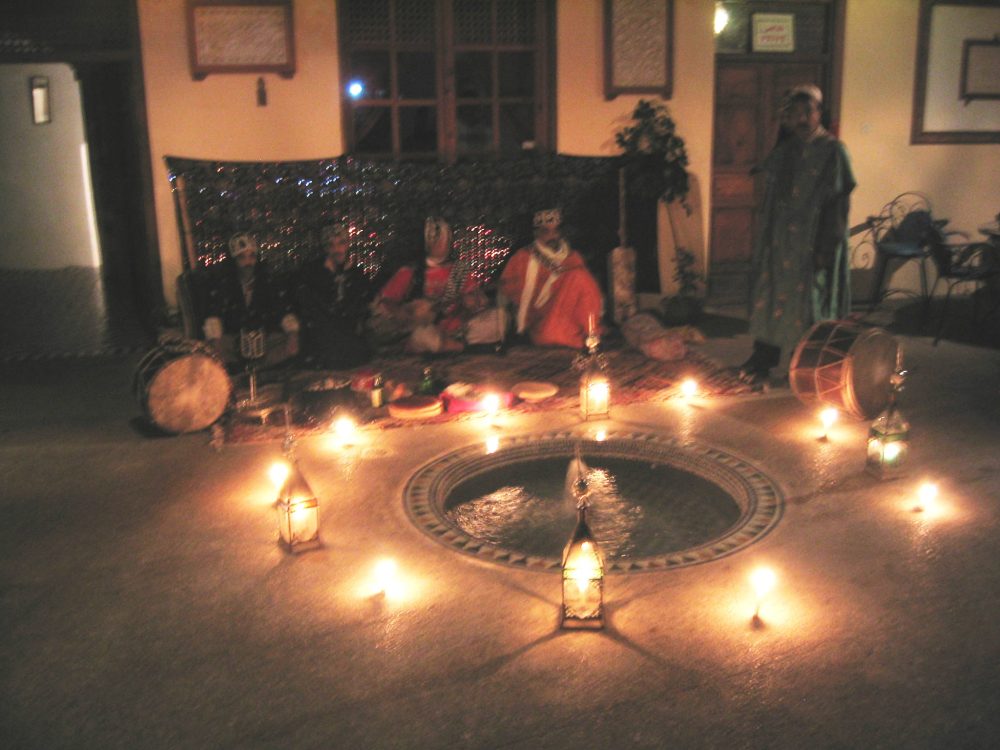
So any young Moroccan can become interested in Gnawa practice and pursue that path. They don't have to share this ancestry of slavery. I read in the notes to the Night Spirit Masters CD words that Paul Bowles wrote in 1990. He writes, "60 years ago, when I first came to Morocco, the Gnawa were almost uniformly black, and many still spoke their native tongue, Bambara." Let’s start with this idea that they were blacker. It suggests that Bowles is remembering a time when the Gnawa kept more to themselves, and their work was not a profession as it is now. In contrast, today the Gnawa path is open to anyone who's interested. Have I got this about right?
In Tangier, Abdellah El Gourd has a place called Dar Gnawa, the “House of Gnawa,” and it is open from five to eight every evening. Anyone can go by. He welcomes everyone. It's a very interesting place to go. He's made it into a kind of institute for Gnawa learning, and he has these young apprentices who come to learn the songs. He has also a large luha, a large kind of slate where he writes the names of all the songs in the suites with the spirits that are invoked, and their corresponding color designations. He is making it into a kind of heritage. So, yes, you can go and study there, and no one is going to ask you for your genealogical papers.
On the other hand, let's not underestimate the devotion of these musicians. To be a good musician, you have to put in your time and your hours, and these people are doing that. They are impassioned. They love the music. Whether they are putting in all the hours at the ritual ceremonies is another question. I don't know if that's the case.
Okay. But this is not like the griots in West Africa, where you have to be born into that kind of family, or else the door is just not open to you. It's different with the Gnawa, and the fact that more people from the general Moroccan population have become Gnawa over the course of the last century would explain why Paul Bowles remembers the Gnawa was “more black” in 1930, right?
Undoubtedly.
So then the second part of Bowles’s statement. If the Gnawa came from all these different places in West Africa, why this intense focus on a single ethnic group from Mali—the Bambara? Based on the history as described, I don't see why this one group has such a dominant role in the way they tell their story.
I don't have the answer to that question. I know that scholars of the Gnawa identify the Fulani as well, the Peul, as being part of this Gnawa heritage or tradition, but it is true that Oulad Bambara, the “sons of Bambara,” take on great importance in the Gnawa ceremony. There are names from Bambara that are still employed. It's interesting that there aren't really sentences in Bambara There are names in the ceremonies. Names can't be translated. Words are translated, but names are not, and names are what remain in the ceremony, the names of the spirits. Remember that the Gnawa were Islamized already. Mohammed Ennaji talks about the slaves’ easier integration into Moroccan society, and this is part of it.
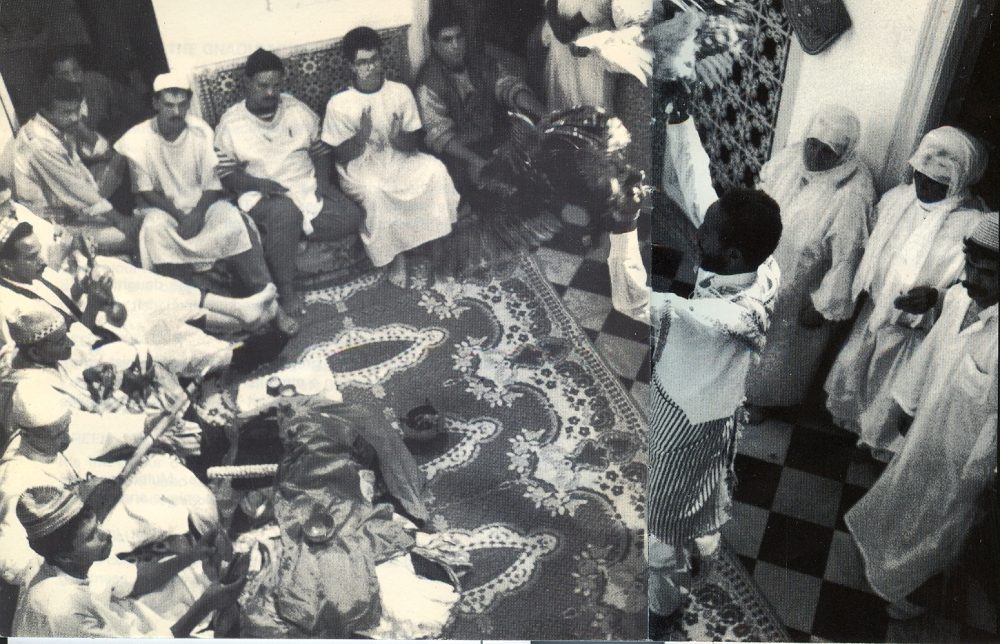
Okay. It is interesting, though, that Bowles remembers the Gnawa actually speaking Bambara. I wonder what the reality of that is. But we won't sort that out today. So moving on, before we talk about possession and trance, why don’t you give us an overview of what happens during a lila?
Well, first of all, lila means "night." It happens at night. The very first thing that happens is that they make a sacrifice. Now, depending on the spirit, and depending on one's ability to buy the animal, it may be a black goat. It may be a red rooster. It depends on what the spirit demands. The sacrifice is done before, and it is a very ritual sacrifice. All sacrifice in Islam, of course, is done in a ritual way, with prayer, but this is a very particular form of sacrifice for the spirits. The blood that comes out of the animal is very powerful. There will be people who will go and touch the blood, put it on their bodies, and when the sacrifice is made, some people go into trance spontaneously. It is a very powerful moment when blood is spilled for the spirits.
The lila, or the actual ceremony, sometimes takes place the next day. The Gnawa will arrive. The guests and invited people arrive, little by little. And at that time, there is what one can call l’abba that is “play” or fraja, “performance or spectacle”—dancing and music that is not ritual music per se. This is basically to create ambience, to create community. It's a lot of fun. It is not to invoke the spirits—not yet. That section can go on for several hours.
At a certain point, the Gnawa will agree that it's the moment, and they will go outside of the residence if it's a home or apartment building, and they invoke the spirits at that moment. Candles are lit. According to Viviana Pâques, it is virgin girls who hold these candles. At that point the incense that is going to be used throughout the ceremony is taken outside. A brazier is also taken outside, the incense is burned, and the Gnawa come out with their big tabl, which are very large snare drums that they hit with sticks. The snare drums are often decorated with henna, which is very propitious. Then they invoke the spirits, letting everyone in the community know that this is taking place, whether they are part of the ceremony or not.
By the way, I've seen people falling to trance during this invocation on the street. When the invocation is finished, people go back into the home or the apartment, cross over the threshold, and the ceremony then officially begins. From that point on, the music is very powerful, because it will bring the spirits through those who are possessed by them. The mqaddema, the female overseer, is there to supervise, because there are people who fall rather violently. There are people who need to be held. Very often women are held with scarves around their waists so that they don't fall, to maintain their balance.
The spirit possession begins with the progression of the spirits, each with its own suite of songs. Each suite of songs is associated with a color, and in each color there are spirits that come through. So are there are the white spirits, which are holy spirits. The green spirits as well. Green is the color of Islam, so these are very holy Islamic spirits. You know, the spirits themselves have religions. So there are spirits that are Muslim, and there are a few that are Jewish, but they aren't invoked very much anymore, and that's interesting in itself. There are pagan spirits. There are the red spirits, like Sidi Hamou. Sidi Hamou is the spirit of the slaughterhouse, and he's very difficult to manage, very demanding. There’s Sidi Mimoun, a black spirit. There’s Lalla Mimouna and Lalla Malika. Lalla Mira is associated with the color yellow. I smile every time I even say her name because she is a laughing, joyous spirit. She likes perfume and henna and pretty clothes, and when her music comes on and women start giggling and laughing, you know that she's making herself known. Throughout the evening, the different spirits are invoked and the different colors with them. Each spirit has a song. Each spirit has a color. Each spirit has an incense. Each spirit has something either to drink or to eat. So all the senses are involved.
There is ingestion at regular moments in the ceremony, and there is a kind of imbibing of incense that happens, which is a very, very important part of the ceremony. Lalla Mira, for example—her incense is musk. There are also all sorts of resins: ambergris, frankincense, myrrh, benzoin, sandalwood—all of these resins and woods are put on the brazier and are held very often right under the nose of the possessed. It's very heady, very thick. It kind of changes your brain waves right away, and when someone rises up to a particular spirit in a particular color, they are draped with the veils and cloths of that color.
So if during Sidi Mimoun’s nuba, his “turn,” someone gets up to trance, they are draped in black. Sometimes they are given knives, which they use to cut themselves. The mortification that happens during the ceremony is quite impressive the first time you see it, as all mortification ceremonies are. You quickly get used to it, and what is always impressive is that people are not hurt. And so there is a kind of symbolic wound that is created, but it is not a wound that injures, but rather one that symbolizes a healing. A cure.
That is so interesting. I saw some of that in one of these films. It looked like they were really cutting themselves, but there wasn't any blood.
Well, I have seen plenty of blood. I've seen plenty of blood.
But they don't cut themselves deeply. Is that what you're saying?
Well, sometimes they cut themselves very deeply. I've seen people run knives along their tongue and bleed profusely. It's not that they are not hurt; it's just that their injuries are not deep in the sense of lasting. They are in a state of transcendence. There is a kind of baraka, or grace, that protects them from real injury. But there is blood.
You write that trance is “a transnational category of the sacred.” What does this mean?
What I mean by that is simply that trance exists all over the world, from Madagascar to China to Russia—everywhere. But it is also something that moves—that is, both music and trance music are circulating around the world, so that the Gnawa will go to Paris and perform at the Divan du Monde in Place Pigale, for example, where I saw them, and people—French North Africans, or French—will go into trance right there. Or not. But it is something that travels, and as I mentioned, I saw something at Duke University where people went into trance. It is less shocking than it used to be when people actually go into trance. People are becoming more and more versed in what that may mean—to “trance.” But I think it means very different things for people who do it outside its context of origin.
So there is both a commonality between these different varieties of trance, and yet in each context there are all sorts of particularities. How they think about it. How they talk about it. Aside from the actual experience, that's important too, isn't it?
There has been a large commodification not just of music but of the trance experience as well. So the discourses around trance circulate at the same time, and people have varying degrees of what they might consider authentic experience. It's really pointless for anyone to use or designate one experience as authentic and another as not. However, I think people are in search of a kind of authenticity through these embodied experiences. You know, in dance—ask any choreographer—music and dance go hand in hand. They're kind of two sides of the same coin. Trance is a kind of dance, a kind of technique of the body. When I was in Morocco, I observed it for many, many months before I got up to trance. I observed how women transited, how they got up to trance when sitting down, how they got up onto the floor, or down onto the floor. I looked at the transitions regular states to trance, and the repertoire of gestures that accompany them.
These are very much like dances. One can learn them, but it does not mean that one is possessed if one learns the movements. There is a certain amount of mimesis that happens. When little children observe their aunts, uncles and mothers and cousins doing this, it's very easy for them—usually when they reach puberty—to do the same thing and to find that they also are possessed. Because it is a technique of the body. It’s a practice. Now when it comes to possession trance or ecstatic trance, there is the question of how we define it, and that is very culturally specific. For the Gnawa, it is very definitely possession trance.
Okay. Let’s talk about possession in general terms. There seem to be a variety of possessing spirits, some good and some bad, and also different levels of receptivity in the body being inhabited. Take us through the stages of possession as you have observed it during ceremonies.
First of all, I would say that there aren't necessarily good or bad spirits. Just like there aren't strictly good and bad people. We are all good and bad, and spirits are also good and bad. Moroccans, or Gnawa, will talk about spirits as being sa‘ib“hard,” or they say that a spirit demands a lot of you. There are certainly easier and harder spirits, but not necessarily good and bad ones.
I think I mentioned that when you grow up in this ambience, it is likely that your path will join those of your predecessors in being possessed, and in being able to trance or having to trance. However, some people are simply afflicted, afflicted with spirits. That may manifest in many different ways. They may have temporary paralysis. They may have headaches that they can't explain. Their joints hurt. Their legs are heavy. I've heard that a lot. They go to the doctor. The doctor says, “There is absolutely nothing wrong with you. There is nothing I can do for you.” They end up going to a fqih, a cleric or a holy man, or a mqaddema or mqaddem, an overseer or responsible person in the Gnawa community, and then they are divined.
There is a divination ceremony that happens in which a sacrifice is made and different colored cloths are put on the person in question to see what spirit will manifest. Once the divination has been made, then one is obliged to propitiate one's spirit. Spirits in the Gnawa ideology never leave. It's not like Christianity where there's a belief in spirits but you can go to a priest and have them exorcised. It wasn't too long ago that that was common even among Christians. For the Gnawa, the spirits are always there. They are permanent inhabitants of the body. Kay skunu f-ik. “They inhabit you."
What can you do? You can propitiate them with a sacrifice. You can propitiate them with incense. You have a ceremony that you open to the rest of the community. Very often, these ceremonies are held during sha‘ban, which is the month preceding Ramadan. Why is this? It's because during Ramadan, the holy month, the spirits are basically banished. They go underground, and have no power over human beings. So if you haven't done your spirit propitiation ceremony by the time sha‘ban comes around, you had better do it, because you can't do it during Ramadan.
When a propitiation ceremony is held, you meet a lot of other people who share your affliction, if you will—who share your state of possession. The fact that you are maskun or maskuna, “inhabited,” means that you're in the community. You are invited to other people's ceremonies. You have a chance to narrate your dreams, for example, and narrate your visions. A whole discursive community develops around the bodily fact, or the spiritual fact, of being possessed.
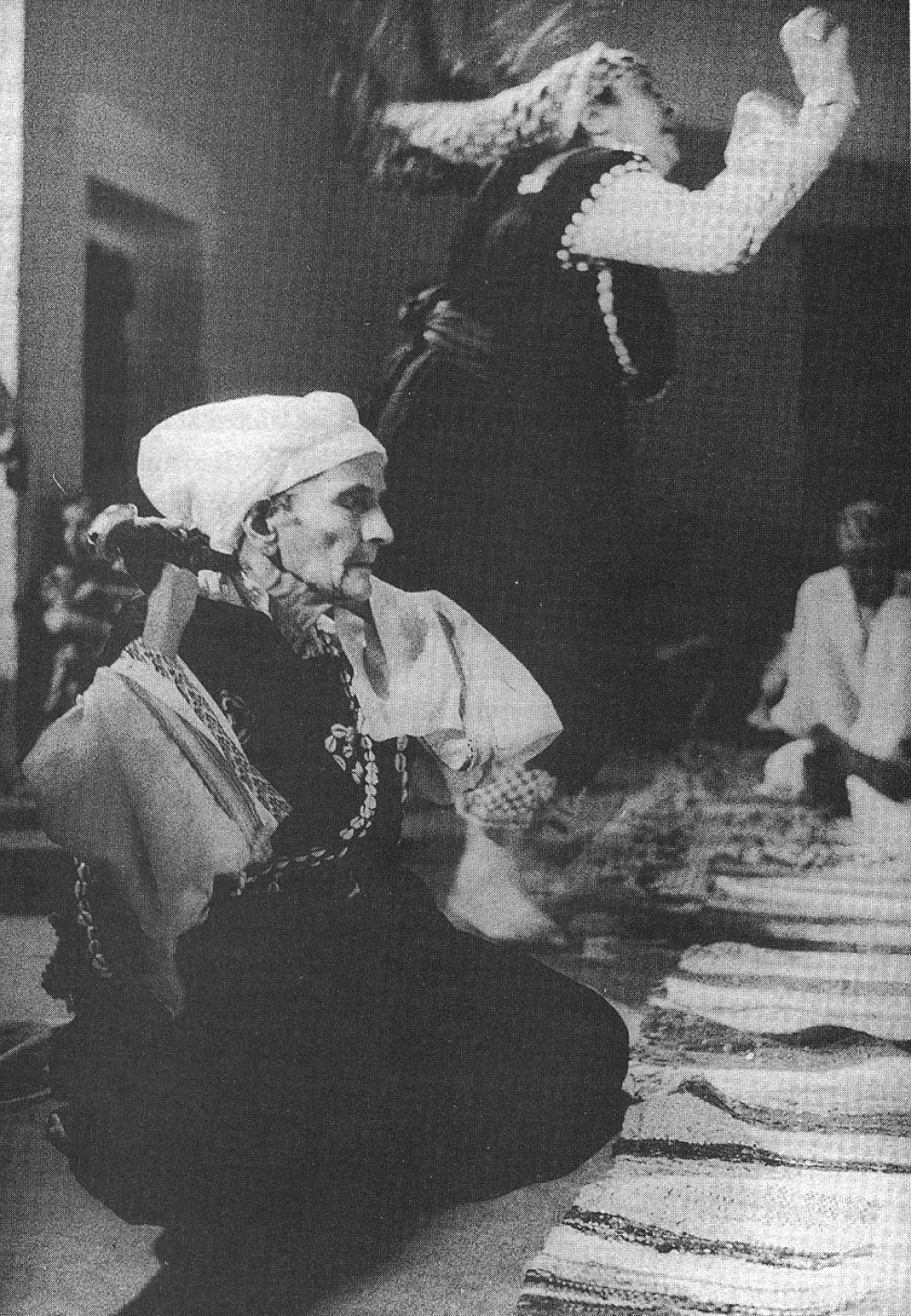
Can you give me a physical description of what actually happens when a person becomes possessed during a ceremony?
Well, I can think back to some of my first experiences of Gnawa ceremonies, because those are the ones that left the most poignant memories. I remember being very struck by the comportment of the young women. I would be sitting next to them and we would be chatting and drinking tea and having a cookie, and then all of a sudden their spirit would be invoked and they would be thrown onto the floor and be writhing there until someone would go to them, cover them with a cloak of that color, sometimes pick them up, and then put a cloth around their waist, and the person would begin to trance.
Trancing is very low in the hips. There's a lot of stamping of the feet. The arms very often are behind the body. The chest is forward. A lot of the time, the hair is loosened because people will be putting their heads back and forth. They will be circulating their heads, really moving their body briskly from side to side so the hair comes undone. Again, people are always covered when possible in veils, or cloths are put over people to cover them. Sometimes, the more experienced trancers will just put the cloth over themselves, over their entire face. They are not visible at all except as a kind of silhouette under this cloth. They also may fall to the ground. They also may be on their knees and swinging their heads back and forth. Some people seek out the incense as though it were a source of sustenance, and put their heads over it.
There is a very intricate interaction with the musicians, particularly with the master who is playing the hajhuj, a three-stringed, pentatonic instrument. I have heard Gnawa masters—and there's one particular time I'm thinking of—actually interact with the spirit who is in the body, saying, "Work for it." (Khadam ‘ali-ha.) There is a back-and-forth, a kind of conversation that is going on between the spirit that is inhabiting the person and the musician. Sometimes the Gnawa will stop playing the qraqab these very loud, heavy iron cymbals, and the hajhuj. They will stop all the percussion and melodic instruments, and just sing, or just clap their hands. Once that happened and the spirit that was dancing in front of them started making the motion for the qraqab to start playing again, and stamping their feet because the spirit wanted the qraqab to begin.
This is a very interactive event at all levels. One person gets up to trance and others will get up to trance, and the sign of a real good master is that a lot of people get up to trance. He really brings the spirits through, and that will be commented on the next day. People will comment on the proficiency of the music, the excellence of it, and the energy of the whole ceremony.
That's interesting. So the ma‘llem will be playing and singing, and people are going into trance and getting possessed. But could you say that the reason this happens is because of his skill as a musician and singer?
Well, I think it's definitely that, but it's more, because a real good master is not just a master of his instrument. That goes without saying. A real good master is a master with his spirits. You know, when you talk to the real masters they all have stories to tell about their interactions with the spirits, and for that, there is a difference between proficiency and experience. There are masters who are really experienced, not just musically, but in the spirit realm as well—and that is felt. It is palpable. It is palpable.
This is reminding me of my conversation with Paul Berliner about possession ceremonies among the Shona people in Zimbabwe. Mbira players are sometimes evaluated based on how many people become possessed. If it's a very good ceremony, lots of people become possessed. But I had the sense they are that it really was a question of musicianship.
Well, if you're not a good musician, nothing is happening. That's very basic. You have to be a good musician, and then…
You make an interesting case for spirit possession as a form of “resistence” to “forms of hegemony” both in a gender context and a colonial politics context. Explain this?
It's not really my argument. It's been made many times by scholars of trance. I'm thinking of Janice Boddy’s wonderful work on the zar cult in Sudan, or even Jean Rouch’s work, his film work in Niger where you see people possessed by their colonizers, and in this way talking back to them. Trance allows a repertoire of expression that in normal life we don't always have access to, whether because of gender restrictions or because of power hierarchies in our society. Within the sphere of trance, other things are possible. Women are possessed by male spirits. They can smoke cigars. (This is the case in Sudan.) People don't smoke cigars in Morocco, but the point is there is a way to expand the possibilities of what it means to be a human/spirit. You are possessed by a spirit, but it's in the body of the possessed, and there are larger possibilities for action, for expression. You can then talk back symbolically to those who oppress you, and in the context of the Gnawa ceremony, there is also a kind of talking back to a past in slavery, which no longer exists, but which one can then master.
That's very interesting. Because I suppose trance is always taking place in some historical context. One might think of it as a way to escape, but what you are saying is that it's really a way to answer back to the past, and to resolve things.
Trance is always culturally specific. Even though it exists all over the world, it will come through in ways that are specific to its cultural context and history. The Gnawa are dealing with a past in slavery, but we can also say that there is a symbolic mastery of other things. One is not just enslaved by others. One can talk about being enslaved by poverty or gender oppression. There are a lot of wounds that can be healed in the context of the Gnawa ceremony, and I think people come for all of those reasons.
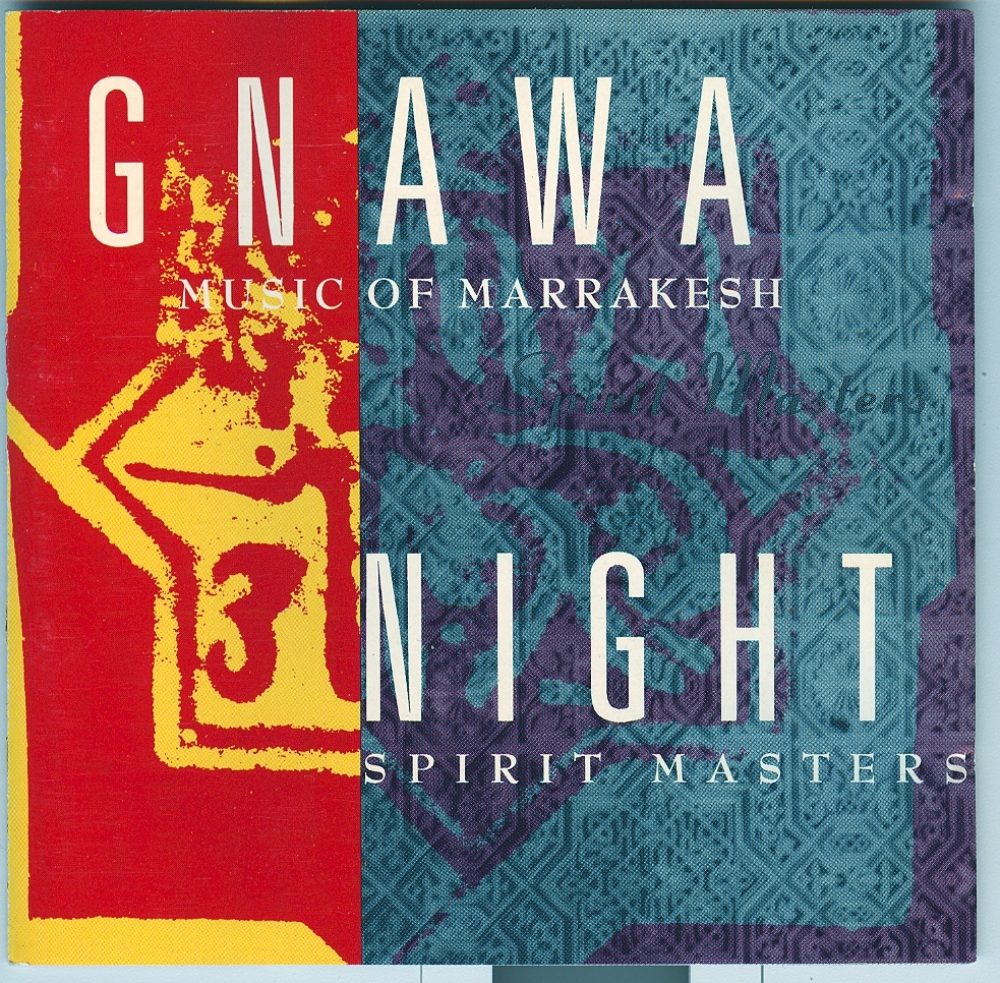
Let’s talk about music in general terms. Listening is an important concept throughout Islamic mystic traditions, correct?
Because Morocco is so imbued with Sufism in the way Moroccans practice Islam, spiritual audition, which is called sama‘‘ in Arabic, is also pervasive. Sama‘ is a technique. It’s a way of listening, a way of spiritual listening, but it also defines the ceremony of listening among the Sufis. It is both of those things. Sama‘ is closest to what composer Pauline Oliveros and anthropologist Judith Becker talk about as "deep listening." We listen so deeply that there is a transformation in the self, and the subject. The Gnawa are not Sufis, but listening is a very important part of the ceremonies. Of course, it's music. But deep listening, deep listening of the sort that puts you in another state, listening to the very subtle cues in the music is different than other forms of listening. I had one woman who told me, "I just have to hear one line, one little line of that music, and I'm in trance right away." It is a very subtle kind of listening that happens at the ceremony. People often have their eyes closed and they are swaying back and forth and listening deeply.
When we did our program about tarab music with A.J. Racy, we talked about a kind of deep listening called samain the context of Arabic art music, Umm Kulthum and so on. This seems like a fascinating extension of that idea from the near-mystical into a fully mystical realm. Music, like incense, has this ability to enter the body, to cross thresholds, and that seems to be a powerful aspect of the ceremony. Let's talk about something else that crosses thresholds, water. I understand that water, even tears, play an important role in possession among the Gnawa.
Certainly not everyone cries at ritual ceremonies. However, there is a belief that the jnun (pl.), the spirits, live in and frequent watery places -- sinks, fountains, rivers. You always have to be careful when you pour boiling water down the drain, for example, because a jinn (sing) might be there, and you don't want to accidentally scald him or her. You say “Bismillah,” “in the name of God,” first. I always put the plug in the sink and fill it up halfway with cold water before pouring out boiling water. It has just become a habit from my days of living in Morocco.
So there is a relationship, an association, with water, but tears as well. If one is grieving, for whatever reason, and crying a lot, it can attract the jnun. In fact, the logic of that is if you are depressed, you can actually attract a spirit. Tears are very significant also because they traverse the body, they are both inner and outer, just like incense, and like music. And like spirits. We can't keep the music out; music just invades the body. We can't keep the incense out. It invades the body. It inhabits the body, and tears come to symbolize that flow between inner and outer too. At Gnawa ceremonies, you often find people in tears or in a kind of lamentation, but it's not a purely negative one, rather one that is seeking forgiveness
I was always cautioned about crying: “You have to be careful, because the tears will attract the jnun.” But the interesting thing about tears, and the thing that I talk about in my book, is their connection between inner and the outer. The jnun themselves are able to pass in. In the Moroccan idiom, al-jnun kay-tlaw f-ik. “The jinns rise up in you and then, kat-tah, “you fall." So the jinn rises up and then the person falls, and when they get up again, it is in the identity of the possessing spirit.
That's fascinating. So when you cry, you are vulnerable.
You’re open. Yes.
Of course, the difference between the music and the incense as opposed to the tears is the direction of the flow.
That's true. When the tears come out, though, one is in a sense open for the jinn to come in.
The idea of transposing a spiritual desire (to be close to God) with a romantic or sexual one is something that runs through all sorts of Islamic artistic expression (and other faiths as well). But it has intriguing particularities in the Gnawa context.
There is a certain eroticization of the ceremonies. And why is that? Because the ceremonies, for one thing, are mixed sex, although I have been at many, many ceremonies where the Gnawa are the only men. Nonetheless, they are men, and they’re with women. There is, as I talk about in the book, a relationship between the ma‘llem, the master, the person who is possessed, and the spirit that possesses them. Often this can be eroticized, because after all, the dance itself is low in the hips. It is kind of an erotic movement. The hair is loose, the woman is swaying back and forth. It's very sensual. And it is not just hetero-sensual. The women take care of each other. If a woman gets up and she is flailing around and does not control her body at all, if she has not mastered the spirit that is within her, and is even liable to hurt herself, she is taken care of all the time by someone else who gets up, puts a cloth around her, holds her. Then, when the trance and the song is over and the woman falls down to the floor, she's taken over to the side. She is sprinkled with mazhar, flower water, and she is basically held and caressed until she comes to. So there is a sensual aspect to the ceremonies. There's a lot of caring going on, mutual caring, women to women. The Gnawa musicians are also caring for those possessed through their music, and they are extremely attentive.
The Gnawa have to decide when to stop. The spirit will usually tell the Gnawa to continue. If the Gnawa stop, and the spirit wants more, the spirit will let them know. But the spirit will also say, "Enough." So there is this interaction between the ma‘llem, the master musician, and the spirit. How are these things cued? They are cued with the body. They are cued with sound as well. There is a lot of sensual attention and interrelation at the ceremonies.
days. It varies from region to region, but yes, it can go on for quite a long time.
Who is Aisha Qandisha?
Aisha Qandisha! Allah hafud. “May God protect us." Aisha Qandisha is a genie, a woman, reputed to be very, very beautiful. I've never seen her, but I've spoken to people who have, who have visions of Aisha Qandisha. She has goat feet, and that's how you know that she's a genie and not a woman. When she appears to you, she looks embodied, or she may look embodied, but she has goat’s feet. She is an enchantress, and will enslave whoever she wants. Vincent Crapanzano has a very famous book, Tuhami, in which he talks about someone who is possessed by Aisha Qandisha, and who basically has an erotic relationship with this genie, and does not have any other relationships in his life. She is quite an impressive mistress, if not master. It’s interesting that the pantheons of the spirits are different, for example, in Algeria, or in Tunisia among the Stambeli. It is the same general scenario of exodus or diaspora in slavery coming up through North Africa, but in every place the practice changed and evolved according to the region. That's what happens with all traditions when they travel. I was discussing this with an Algerian scholar, Abderrahmane Moussaoui, and he was telling me the pantheon in Algeria is different. There is quite a bit of overlap, but there are some spirits that are invoked in Algeria that aren't in Morocco, and likewise.
Aisha Qandisha has been rising in popularity, and she is by far the most popular spirit in Morocco. She comes at the very end of the ceremony, just as, or just before night turns into day. In the course of her suite of songs, you see the sun rise. And then the ceremony is over. She is very, very powerful, and she possesses both women and men.
More than that, I have heard stories about Aisha Qandisha. I know a ma‘llem who is possessed by her. She has many incarnations. One is Aisha al-bahariyya “Aisha of the sea.” She possesses fishermen. He saw her when he was fishing when he was young, and was completely struck, mdrub, as they say in Arabic. He was stunned, in the literal sense of that term. He came back. He was still at his mother's home at that time. She brought him to a mqaddema, a healer, who basically got him back on his feet. But she had possessed him with her very beautiful, gleaming eyes. He described her as having inhuman, gleaming eyes when he saw her across the water. She's a very powerful jinn. What does it mean that she is more and more popular? Is this a feminization of the Gnawa pantheon? Is this a comment on the diminishment of patriarchy in Morocco? Perhaps
That's great. You know, the first time I ever heard of Aisha Qandisha was from the musician and producer Pat Jabaar. This was over 15 years ago, but as I recall he described her almost more as a witch, a fearsome figure that every Moroccan child dreaded. And of course, as we know, Pat named his group after this spirit, Aisha Kandisha’s Jarring Effects.
Oh, she is a figure of popular culture. The pantheon of the Gnawa is something that is known well outside Gnawa circles. Ironically, perhaps, I met an Aissawa Sufi group-member who said, "We also play the numbers,”—that is, “we invoke the spirits.” It's kind of become a bit of a business to do this. The spirits are well known, and it's not just the domain of the Gnawa anymore.
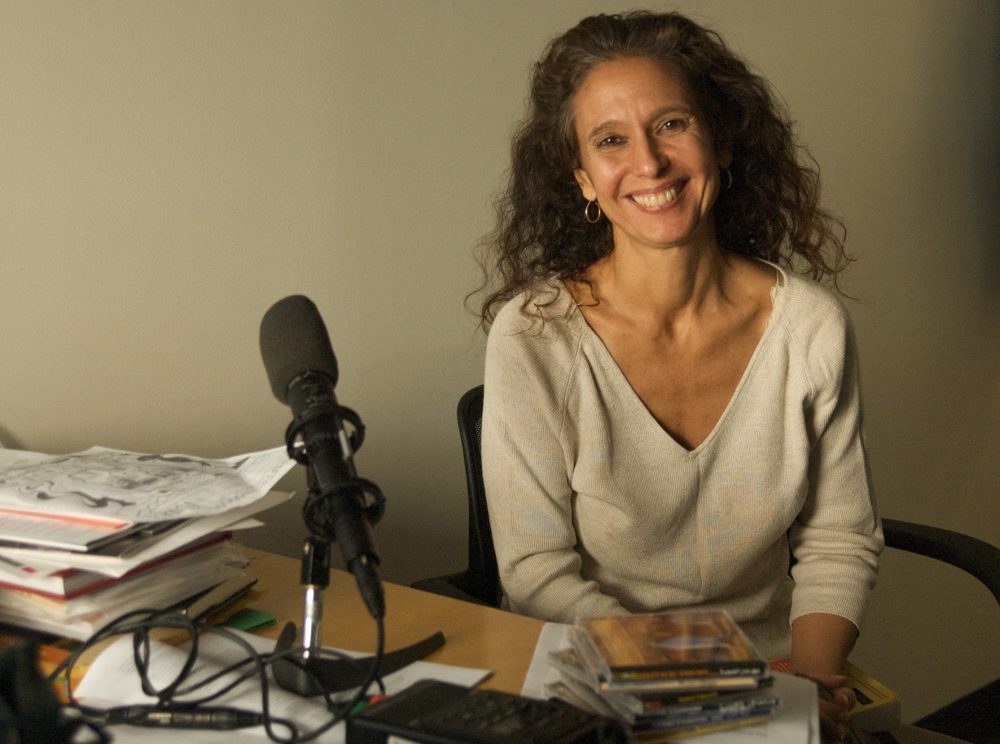
Tell us about your own first experience of trance, and how that came to affect your work.
I attended ceremonies for months. I had a very good relationship with a ma‘llem in Rabat, Si Mohammed Chaouqi, who generously invited me to every ceremony that he played. He would either come and get me (we didn't have cell phones at the time as this was 1994) or he would send his son Yunis to get me. He would say, "There is a ceremony tonight," or, "There's a ceremony tomorrow at such and such a place.” Most of the time I went with them. When you go with the ma‘llem, you are welcome. Otherwise, if I had just showed up, I would have been turned away, but because I went with the ma‘llem, I was welcome, and eventually I got to know the female community that always invited them, and the mqadammat, the overseers.
I spent months just watching these ceremonies, kind of as if it were choreography, watching the movements, watching how they get up on the floor, when, what they do. Then one night, I got up and tranced. I should say that I've always enjoyed dancing. I've always been an amateur dancer. So this is something that I enjoy, and I was looking forward to the moment when I would feel confident enough to get up onto the floor, and finally I did. The rest of the evening passed. I think I only got up for one spirit. I don't remember who it was, or at least at the time, I didn't remember—they let me know who it was later. In the morning, we were drinking our harira soup, as you do in Morocco, and the ma‘llem looks over the rim of his bowl and he says, "Tlaw f-ik al-barah….. The spirits rose up in you yesterday, right?"
And I said, "No. I was just moving around."
And then he looked me right in the eye, and he said, "The spirits rose up and you yesterday." Period. It was a pronouncement, and from that moment on, I was considered maskuna, “inhabited." I went to a divination ceremony, I began to have visions, I had lucid dreams, and I had what you might call auditory hallucinations where I'd be hearing the music in the middle of the day, as if it were playing right next to me. I went pretty far down the path.
Fascinating. I must say that as I was reading I didn't really expect that, but I think it has great persuasiveness to your book. You write, “In the choreography of trance, the spirits determine the steps, but the body assumes them.” Later on, you call the trancer “the performer of a complex script.” This is something that's happening to you. The spirits are moving through you, and yet there is an order to it, going back to this idea that we spoke about, the mimesis of children watching elders. It seems like a bit of a paradox. Can you resolve that for us?
Well, a paradox can never be resolved. That’s the wonderful thing about paradox. Ibn al-‘Arabi says that you only advance in spiritual knowledge when you can embrace paradox. It's not this or that, it's this and that. You have to embrace paradox. But you are absolutely right that trance is a kind of technique of the body. We can look at it that way. We can look at it as a choreography. I did in the beginning of my research, but once it is internalized, that choreography, it becomes natural. I'm sure that most of the Moroccan woman that I knew didn't think about it as a script. It performed itself through them. The outsider can kind of see this script, because it's not part of our naturalized world. I think about Marcel Mauss who has this wonderful article about techniques of the body. He talks about when he was lying in a hospital bed, and he was watching the nurses sway back and forth, and thought, "Where have I seen that before?" Apparently, it was in Hollywood movies. Susan Ossman talks about this in her second book. The point being that we learn our bodily habitus, our way of being, our bodily being, through example, through watching, through observing, and through growing up in those environments.
So trance is ubiquitous in Morocco. It is a culture of trance. It is everywhere. I have seen people go into trance listening to popular music on the street, and at festivals. I've seen people go into trance in the context of the ‘Aissawa Sufi music, but also popular music, Nass el Ghiwane, for example. The great thing about [popular bands] Nass el Ghiwane and Jil Jilala also—they had a Gnawi, someone who knew the music in each of those groups—was that it connected to this trance aesthetic. Trance has become one of the signature aesthetics of Moroccan music, as far as I'm concerned. Not malhunnecessarily, not Andalusian classical music, but popular music has this element in it.
Al-Maanouni, a Moroccan filmmaker, made a very well-known film called Al-Hal which Martin Scorsese recently remastered, which documents the popularity of trance and Nas al-Ghiwan.
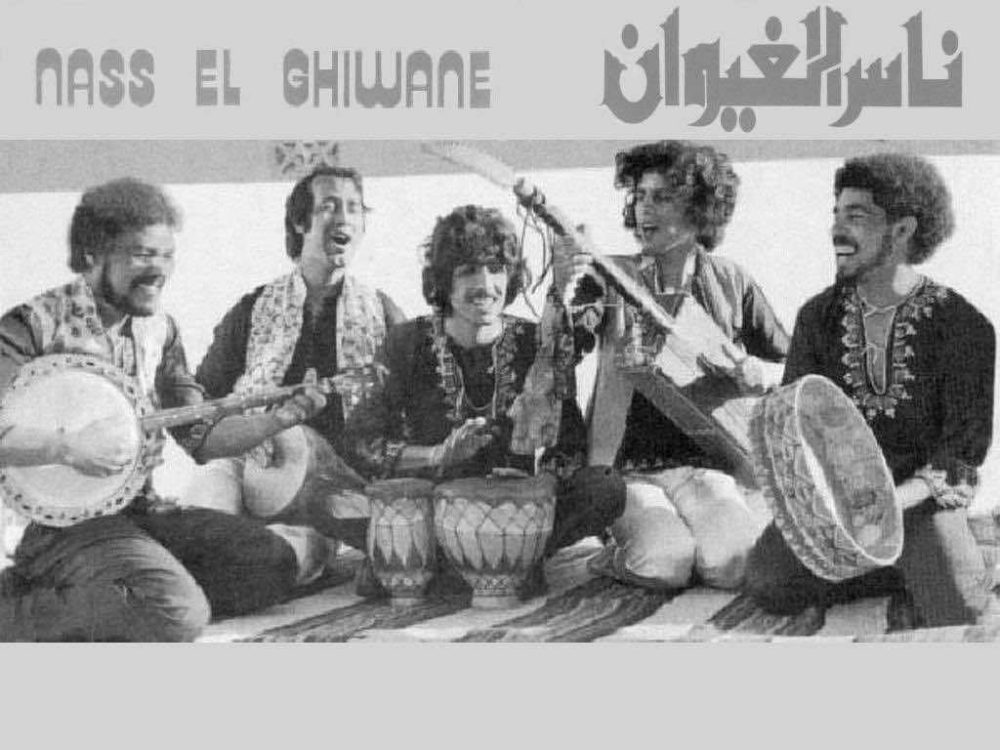
Let's talk more about Nass el Ghiwan and Jil Jilala and about the cultural milieu of the 60s and 70s. What was the dynamic in Morocco then? How was Gnawa identity changing, and what role did cultural events in America and Europe play in this?
Well, Moroccan independence happened in 1956. It was a more secular time. People were interested in independence and the development of nationhood more than, for example, orthodox Islam. It was a time internationally when all sorts of things were going on. In Palestine. In Lebanon. It was a time of great pan-Arabism and revolutionary politics—the Black Panthers in the United States. Moroccans were interested in creating a state but not in being oppressed by it. They were very influenced by this international ambiance. There was the Pan African Conference in Algiers in 1969, and Moroccan dissident Ibrahim Serfati, a Moroccan Jew, was there, and he talked about the Black Panthers, and how this essential energy from Africa had to revitalize Morocco. He exhorted North Africans to also be inspired by these movements.
Along come Jil Jilala and Nass el Ghiwane. I hope it's not unfair to say that they are kind of like the Beatles and the Rolling Stones of Morocco. They gathered up the energy of the entire generation, and they did it in part by integrating a Gnawa, trancey aesthetic into their music. Of course, there was trance even in rock 'n roll. I mean it was a very psychedelic moment—Jimi Hendrix, Robin Trower. All of that music was very trancey.
Forgive me for opening a parentheses, but when I was doing my research in Brittany with the Gnawa, I was with Si Mohammed Chaouqi in a van on the way to a concert, and they were reading a newspaper, and in the newspaper, it said the local group Lila Noz was going to play, and the Gnawa were going to play with them. It mentioned Si Mohammed Chaouqi “who played in the past with Jimi Hendrix.” He had never told me that, and I said, “Si Mohammed, you played with Jimi Hendrix?!" And he said, "Oh, yeah. We used to love to get high.” That was a moment.
Anyway, coming back to the 1960s and 70s, not only was there a kind of essentialism going on in terms of Africa and African aesthetics, but it was in the service of a larger liberation politics, and the Gnawa at the time came to be kind of like the blues musicians of Morocco.
Moroccan scholar Chouki el Hamel has a wonderful article in the Journal of North African Studies, and in another journal as well, on the Gnawa as blues musicians, the blues musicians of Morocco. They kind of play that role. And just as the blues musicians in the United States gave birth to so many genres afterwards, so the Gnawa infuse the Moroccan musical aesthetic and go in many, many different directions. They are poised right now to enter a global music market as “the blues musicians of Morocco.” Of course, it's not blues in the sense that we know it, but in the sense of being inheritors of slavery and the whole slave experience, there is a lot in common. Those associations are often made.
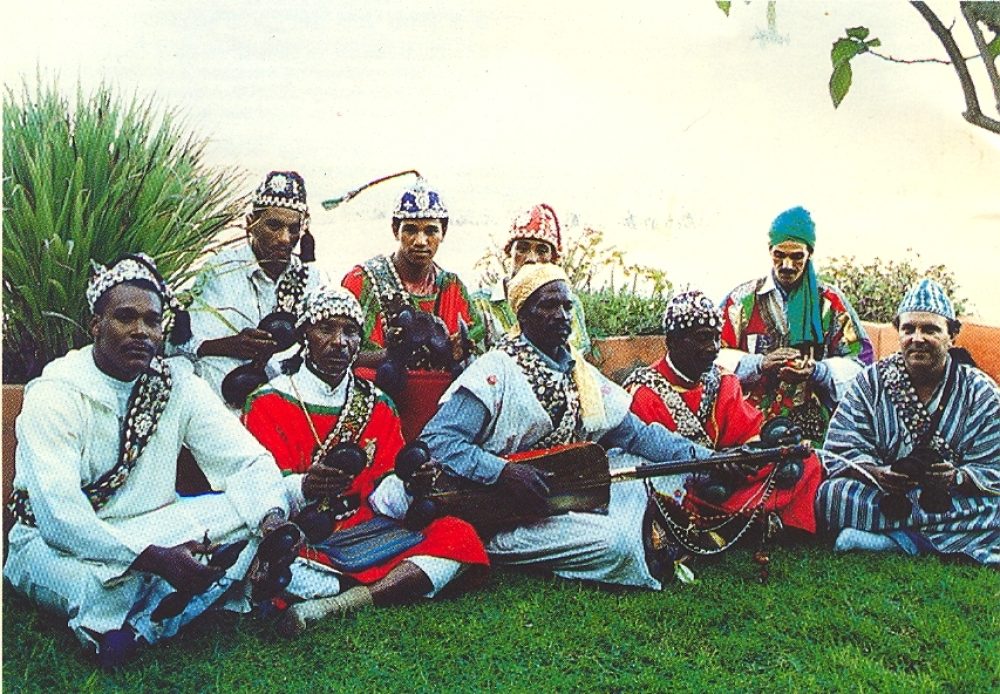
Bertrand Hell writes about the Gnawa as “gatekeepers of a counter-world….moving on the limits of the licit…” What is their status in Morocco today? Specifically, how are the Gnawa perceived among Morocco’s various Sufi sects? You write of “their ambivalent reputation as magicians and tricksters within the hierarchy of Sufi-influenced tariqat and tai’fat.” How have you seen Gnawa status evolve over the years you’ve been exploring Gnawa culture.
There is so much Sufism in Morocco of so many different ilks, so many different orders. The Gnawa are not Sufis. They are considered a tai’fa, an association, rather than a tariqa, an order. One of the differences being, not only hagiography, not only mediation by a shaykh, but the Sufis overall are interested in communing with God. They go straight up to find access to and communion with God. They don't hang around with the spirits at all. It's not that they don't believe in the spirits. They believe in the spirits, but they don't want to traffic with the spirits. It's a dangerous place to be. The Gnawa are specialists in the spirit world. When people don't know what to do with the spirits that are plaguing them, the Gnawa are the people to see because the Gnawa have mastered this realm. This is the realm in which they live.
Because of this, they are considered transgressive. They are often feared. They can be considered magicians or tricksters, but the bottom line is they interact with the spirits, and the spirits are capricious. The spirits can be malevolent. They can be good too. When I was divined, and the mqaddema told me who my main possessing spirit was, she said, "He will strike, and he'll strike and he'll strike, but in the end, if you propitiate him properly, you will end up partaking of his power, and he will ultimately help you." It's a complicated relationship one has with one’s spirit, and the Gnawa make their business in understanding all of these subtleties. There aren't too many people who know that realm as they do.
We were talking about the difference between the young guys coming up now and the ma‘llems (mu‘allamin, pl) of the past. I am not convinced that the young musicians, the self-proclaimed “masters” now, know the spirit realm. They can be fantastic musicians—but I'm not convinced that they would know what to do with someone who is deeply afflicted or unbalanced by the presence of a spirit in their life.
The historian Mohammed Ennaji went further than that. He basically said that the Gnawa of today are “performers.” The words of their songs are products that they sell, and basically it is no longer a ritual of healing. It is entertainment. He didn't seem to think there was any healing going on anymore, although he was very clear about the fact that there was a time when members of the white community went to the Gnawa for treatment, to the healed. But in today's context, with this whole cultural shift that flourished in the ‘60s and ‘70s as part of a longer process, that prior reality as Ennaji perceives it is pretty much over.
I would be cautious about saying that the secrets of the Gnawa are gone. I have reason to doubt that, because I know masters, and I think it would be a big insult to say that all of their knowledge is gone. It may be going, but I don't know that it's completely gone. I think of the ethnomusicologist Jean During in France, one of the most well-known and thorough scholars of Sufism. He says the sacred never disappears, it just changes form. I had Gnawi Abbas Basa tell me as well, "It's not my business if I play in a nightclub or I play in a Gnawa ceremony. The spirits do the work. I just play the music. The spirits do the work.” Now that's I think a nice attitude. I would like to believe it, and I wouldn't want to be so cynical to say that there can be no spirituality where there's commodification. In this world that we live in now, where sacred music festivals and sacred pilgrimages are organized by tourist agencies, tourism and the sacred are so integrally linked that if one canceled out the other, we would be in a hopeless world. I think that they can coexist. But they are not existing like they used to. Perhaps they are existing on a much more subtle level. I think we have to have a more subtle radar, for sure.
That said, even when Viviana Pâques did her research in Tamsloht in the 1950s and ‘60s, there were very few Gnawa masters who could articulate the cosmology that she wrote about, which she found was an extension of sub-Saharan African cosmologies. She inferred a lot of it through the ceremony, and through the clues that people gave her. We have to remember that knowledge is transmitted in many ways. It's not necessarily in books. It's not even necessarily intellectual. Knowledge can be transmitted through the body and through music in ways that are very difficult to articulate but that nonetheless are transformative. Things are transmitted from generation to generation, and I have to believe that if the music continues to live, that some aspect of the wisdom of that music, and the healing that it embraces or for which it is a vehicle, also lives on.
You were shocked the first time you saw Gnawa musicians performing sacred music in a European club. Why? And what have you since learned about the efficacy of such performances?
I was at the Divan du Monde in Paris in Place Pigale with Si Mohammed Chaouqi and his brother and son. His two daughters were there also and actually trancing, which was interesting. There was a mixed audience of French North Africans and North Africans and French. I make the here the distinction between French North Africans who grew up in France and those that didn’t. Anyway, they played some of the numbers that were straight out of the ceremony. Now the numbers in the fraja, the beginning of the ceremony, before the spirits are invoked, those are licit. You can play those wherever you want because they are not sacred. They are not invoking the spirits, so those songs are basically free domain, if you want. No one is breaking any taboos by playing them, but when you start playing the songs that invoke the spirits in a commercial context, I was taught that you risk invoking the ire and the retribution of the spirits. I went to Si Mohammed afterwards, and asked, "Aren't you afraid of making the spirits angry by playing these core invocation songs?”
He said, "The spirits know my niya, my intention, and my intentions are good so we’re good. We're good with the spirits. We’re good with the music." That's one response. Another response might be, "I play the music. The spirits do the work. And it doesn't matter where we are." So this ma‘llem is basically saying that it's not about the context. But then over time, one ma‘llem did it, another ma‘llem did it. Nothing seemed to happen, and then all of a sudden it just became common practice. It was shocking in the beginning. It is dangerous, because people go into trance, and when they do, there's no mqaddema to hold them, to take care of them, and to relate to the spirit. So it is dangerous in that regard, but this is where you might wonder if there is not an incremental secularization of the music, the more it is played in commercial context. To what extent does the ritual context carry the power and the meaning? It's a delicate balance. Because if you only play at nightclubs, eventually the healing aspects may get watered down. And clearly, some people come with no knowledge of who the Gnawa are, no knowledge of what they're supposed to be doing, and they have a little experience, and they leave. They may not know anything about trance healing, sacred music, or anything. At first, I was a little shocked. Now I am no longer shocked. It happens all the time.
You know, I began my research in 1994 and we’re speaking in 2009. Things have changed considerably in that time, and now the Gnawa really want to have that title on their identity card. Every Moroccan has an identity card that says what profession they work in, if they do, and one profession now is Gnawi. It helps you get a visa, and you can go out of the country as a professional musician. It's not so easy. It doesn't happen automatically, but there has been an incredible professionalization of the Gnawa identity, the Gnawa mark, the Gnawa aesthetic. With the Gnawa Festival in Essaouira particularly, this has gotten out of hand.
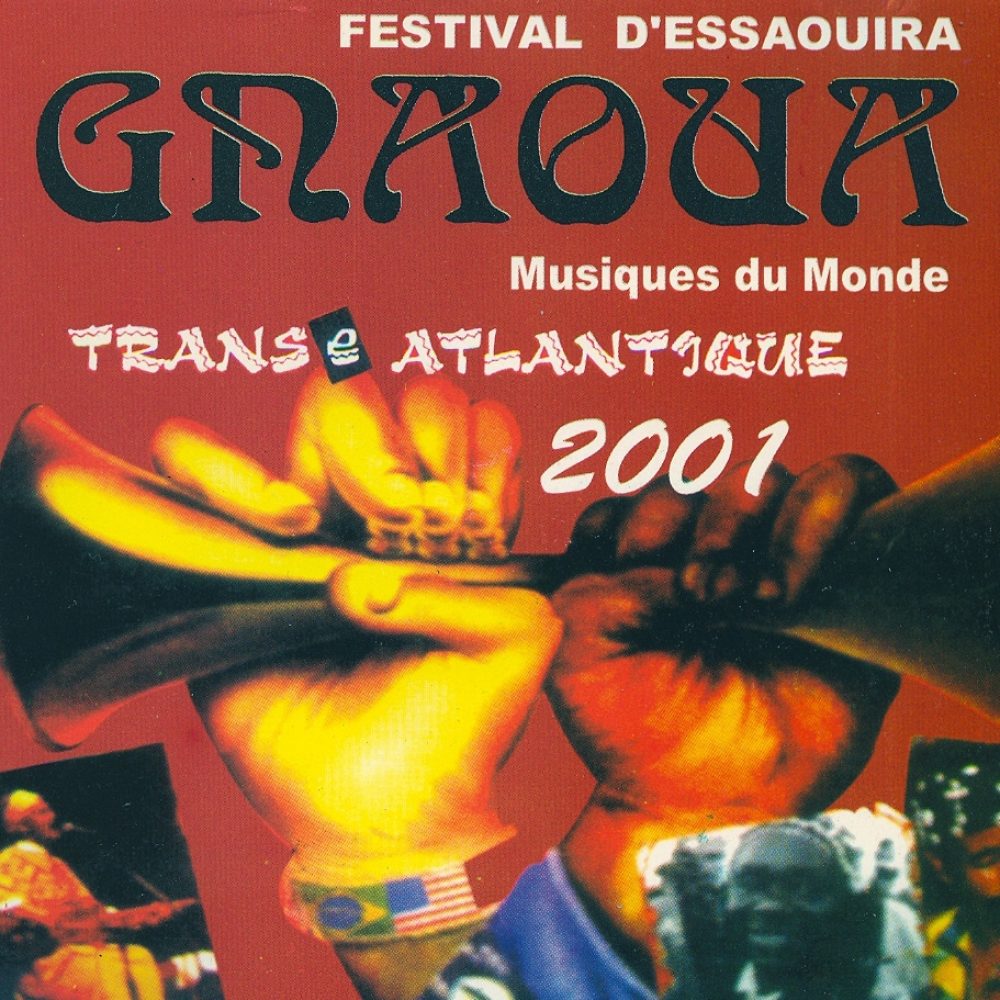
When did it become something that people wanted to put on their identity card, roughly?
I had this conversation with Abdellah El Gourd. He himself was saying, bekri, "Early on,” or “in the olden days” -- that wonderful time marker. I would say, rough guess, 10 to 15 years.
I’ll tell you a story about the early years of the Essaouira Gnawa World Music Festival. Abdelhafid Chleyh was one of the founders—exactly who founded it is, I guess, a great debate. I won't say it's him because I know there are the people who claim that, but he was certainly one of the initial people who had the idea and were in the conversations. In any case, in the beginning, they did a ceremony. They slaughtered a sheep in public. They went through the entire ceremony at the festival, and some people got very upset because it was opening up the ritual to eyes and opinions that were foreign, if you like, people who didn't understand what was going on. That stopped, but now the concerts themselves are called “lilas,” and there's a certain irony here in that in the festivalization of this practice, it’s gone from and a real ritual to a simulacra of the ritual where the titles are transposed, that is, where the concerts are called “lilas.” In the early years, again, there were concerts, but there was also an actual lila at the zawiya—the Gnawa sanctuary in Essaouira. That may still happen, but not in the same way. It's much more commercialized now.
Click here for a link to the Essaouira Gnawa Festival official website
The festival started in 1998, right?
I think so. I was there in 1999, but I think it did start the year before.
Randy Weston talks about the color blue entering his spirit at a lila in 1969, and since then, he plays his piece “Blue Moses” at every concert. Tell us a little about Sidi Musa, and how this connection to “blue(s)” and the sea makes sense from an African American musician’s perspective.
Well, Randy Weston came to Morocco on a State Department tour in 1960. He visited many countries in Africa, and Morocco was the last stop, and soon after his return to the U.S., he went back. He was so taken with Morocco, and the Moroccans were so taken with him that they invited him back. He was looking for a place to settle. It was a time of rock 'n roll. It was a time when jazz was not terribly popular. It was waning a little. Randy took up residence in Tangier, and he opened up a jazz club called African Rhythms. You had to be a member, and some very notable ex-pats and artists were members of that club.
He talks about his entry into the Gnawa culture in terms of attending a lila and being so taken by the songs to Sidi Musa that he was in trance, he said, for a week. “It was so powerful,” and I'm quoting, “that I was in trance for a week." For Randy, it was the color blue, the color of Sidi Musa. Sidi Musa is Moses, who led the Jews out of Egypt. He parted the waters for the Jews, and liberated the Jews from slavery. So it's a very symbolic spirit for Randy because it has to do with slavery, connecting him to the African American experience, but also to liberation, and to water, and to the color blue. Randy starts in the African American diaspora and himself traverses the Atlantic, crossing the waters. The color blue is symbolic, obviously, of the blues, and Randy talks about the fact that Duke Ellington had his piano painted blue. Blue is a very symbolic color and Randy Weston finds himself enchanted and entranced with the spirit of the color blue, and writes a beautiful, beautiful piece called “Blue Moses,” that he plays in every concert without fail everywhere that he is in the world. It's his way of propitiating his spirit.
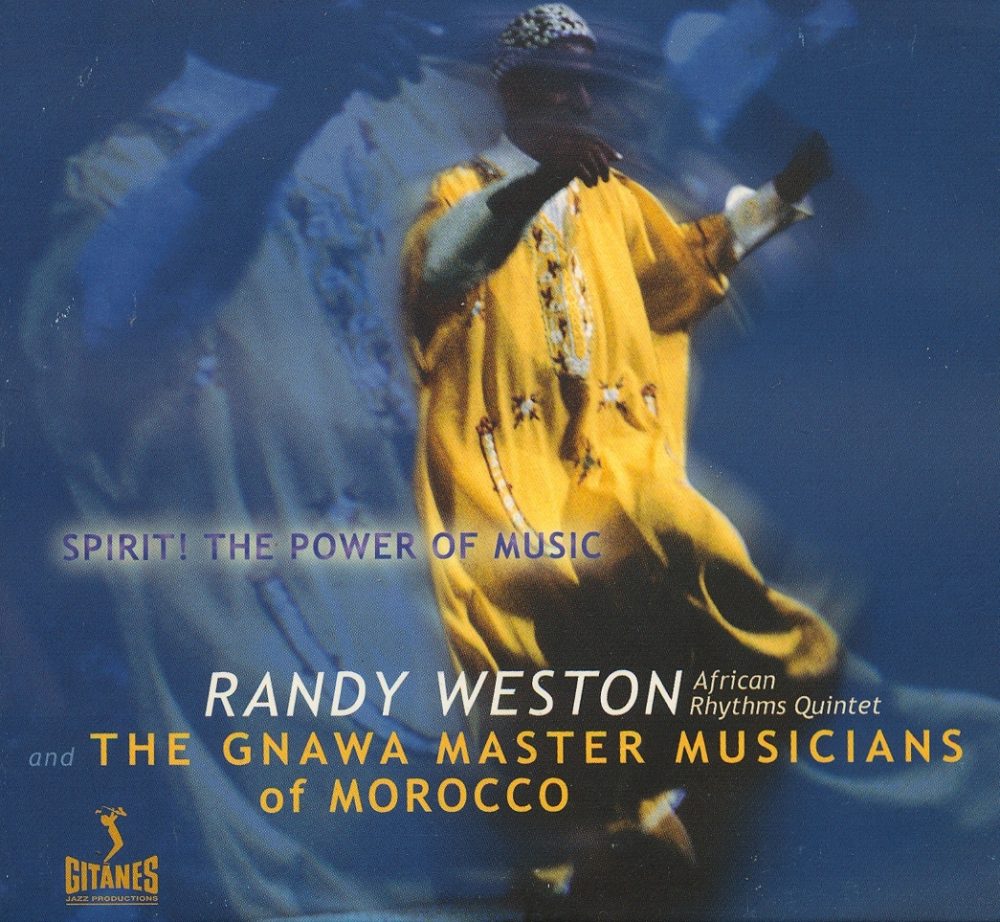
Well said. Before we end, Jimi Hendrix visited Morocco very near the end of his life. It's very interesting to think that he had that experience with the Gnawa.
Robert Plant also. Robert Plant was there with Jimmy Page. There were several waves of musicians who came to Morocco, and particularly to the Gnawa. Certainly Randy Weston was among the first wave. He was in the first wave, and to a large degree he instituted the first wave. But we have later waves. We have Robert Plant, who also worked with the Gnawa. Jimi Hendrix touched down. The Rolling Stones… Well, they were with Jajouka. But there were these movements that came to "discover" the Gnawa. I have a little bit of a problem, though, with the fusions made with the Gnawa at the Essaouira Festival. What role do the Gnawa play? The rhythm section. They are always the rhythm section. It plays a little bit of this essentialism of ‘African equals rhythm.’ Africa is rhythm, and melody, and harmony, and cosmology, and the beautiful thing about African rhythm is that those are all of a piece, an extremely complicated picture expressed in compositions. But when the Gnawa are brought in just to represent the rhythm section and to be the representative Africans in the mix, then I think we're reproducing some of our old musical stereotypes. Whether it works or not. And I think in many cases it works beautifully.
That's a good point. Very profound, actually. It's so subtle because on the one hand it is a reaching out, a big international artist reaching out a hand, and helping the Gnawa. But at the same time, there can be an element of condescension, exactly along the lines you describe. And I think the Gnawa, particularly, because their instruments are so much in the lower register, or else percussive, then it becomes almost obvious. Of course it's the rhythm section. Fusion is always a tricky thing. How do you maintain an appropriate level of respect, and still do something that's musically successful and interesting? It's very difficult ground.
Well, let me say this. The Essaouira Gnawa Festival has been instrumental in putting together musicians from all over the world with the Gnawa. But these are musicians from all over the world who might not even have thought about it, but who are then are invited, and discover the Gnawa, and then take that influence back with them in other contexts; they take the Gnawa aesthetic, but also take the name. So the festival has a lot of power in the diffusion of Gnawa music and musicality. On the other hand, you have to look on the ground with what happens at the Festival. I know the directors of the Festival. They have extremely good intentions, and they do very good and hard work, but it also has created a hierarchy among the Gnawa in Morocco. Who gets to perform at the festival? Why are some people paid more and some less? Who makes those decisions? Whenever tradition turns into a kind of heritage that represents a whole culture, there are hierarchies, local hierarchies that are formed, and local inequities that are committed. Or created.
There's that element too. There is a kind of tokenization almost of the Gnawa in these fusion groups. I'm sure they don't view it that way. But, because they are creating a fusion, the Gnawa often represent North Africa in that mix. I think some of them work very, very well, particularly the ones that have other North African musicians in them.
Do have any favorites?
You know, I'm such a traditionalist. I've been to the Gnawa Festival at Essaouira I think four times, and so I hear a lot of these fusions. Sometimes they work and sometimes they don't work at all. It's not music I listen to inmy living room to tell you the truth. Not in the same way that I would listen to Randy Weston playing with the Gnawa.
Thank you for taking all this time. It’s been fascinating.








